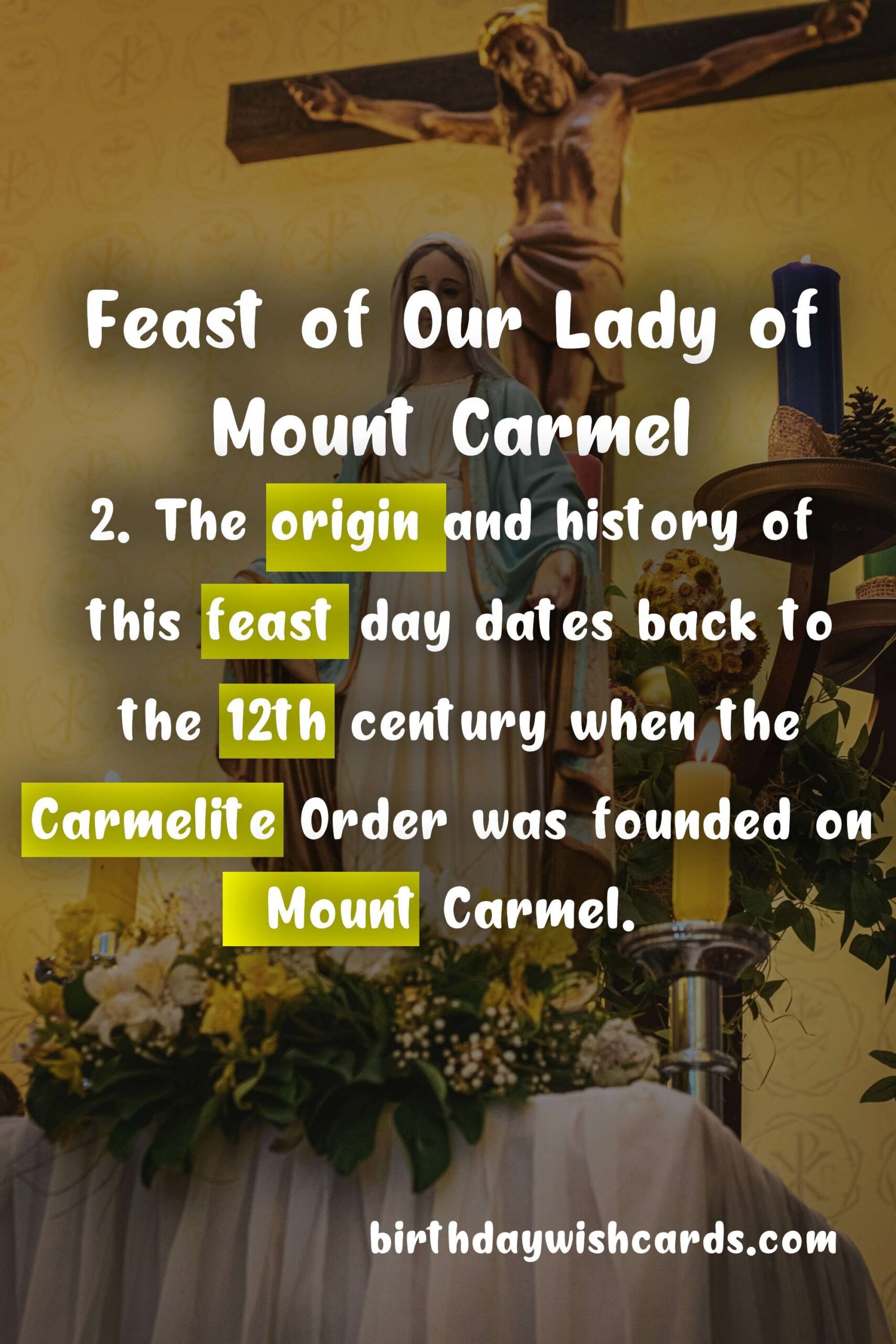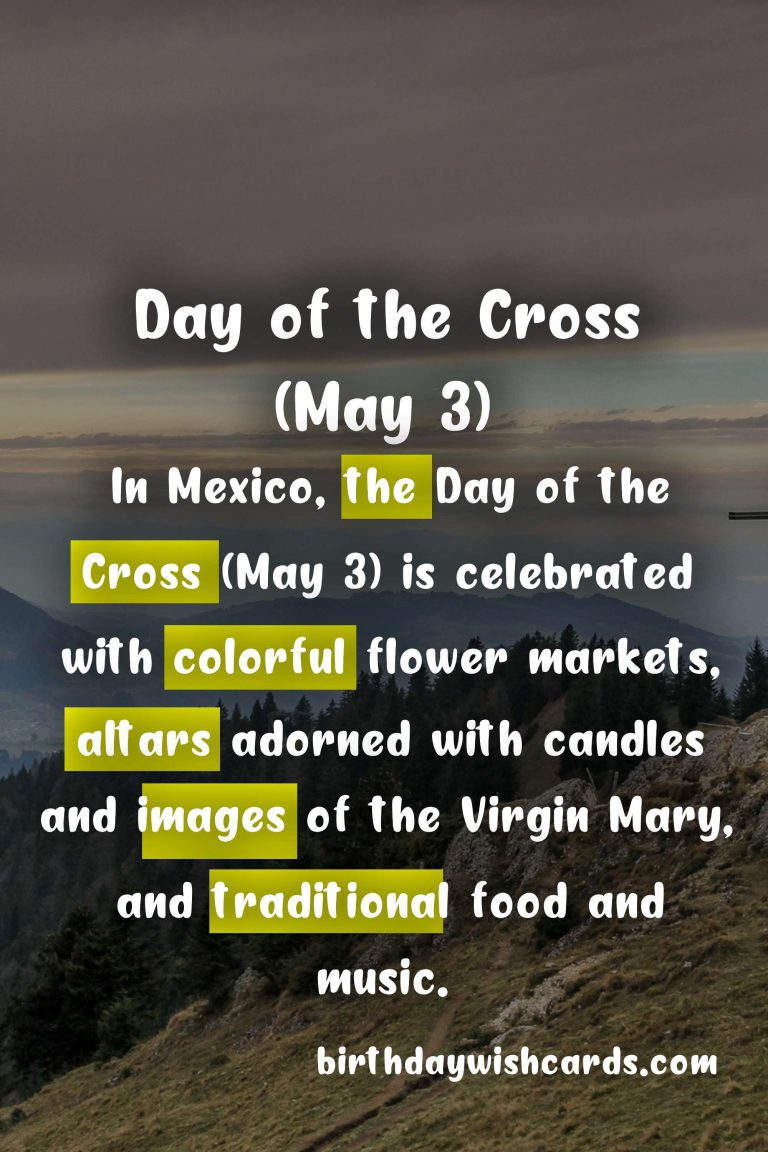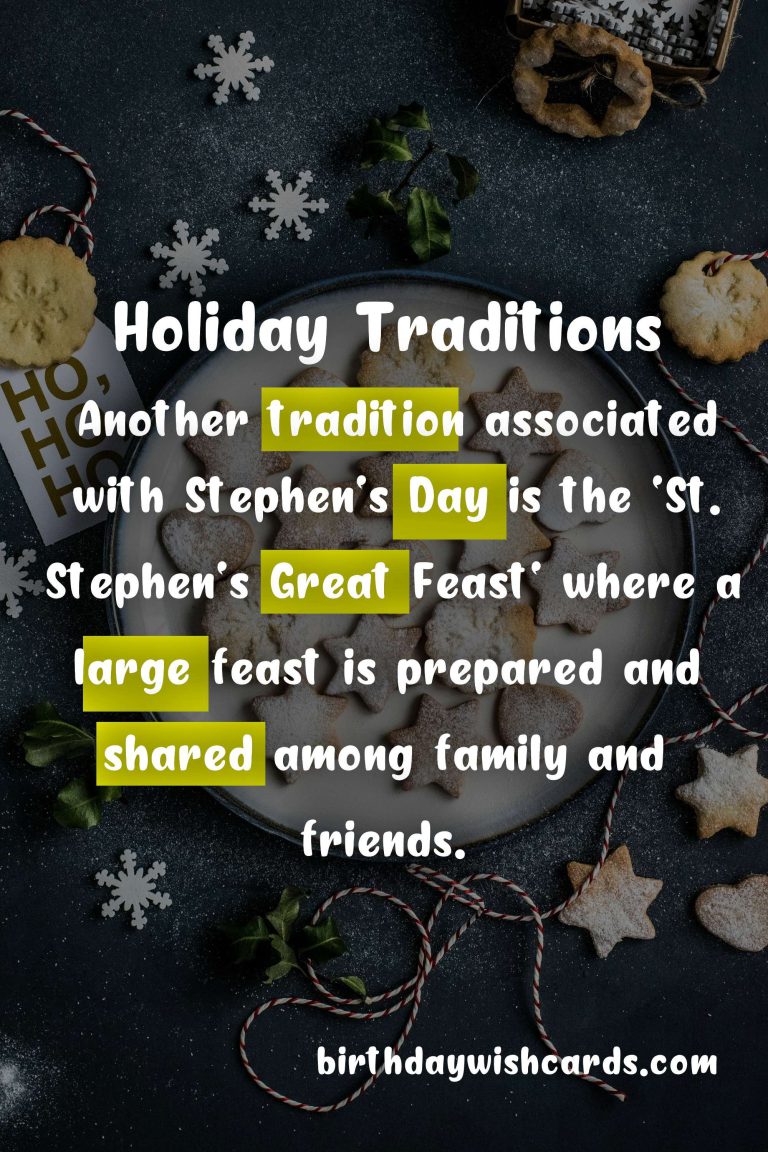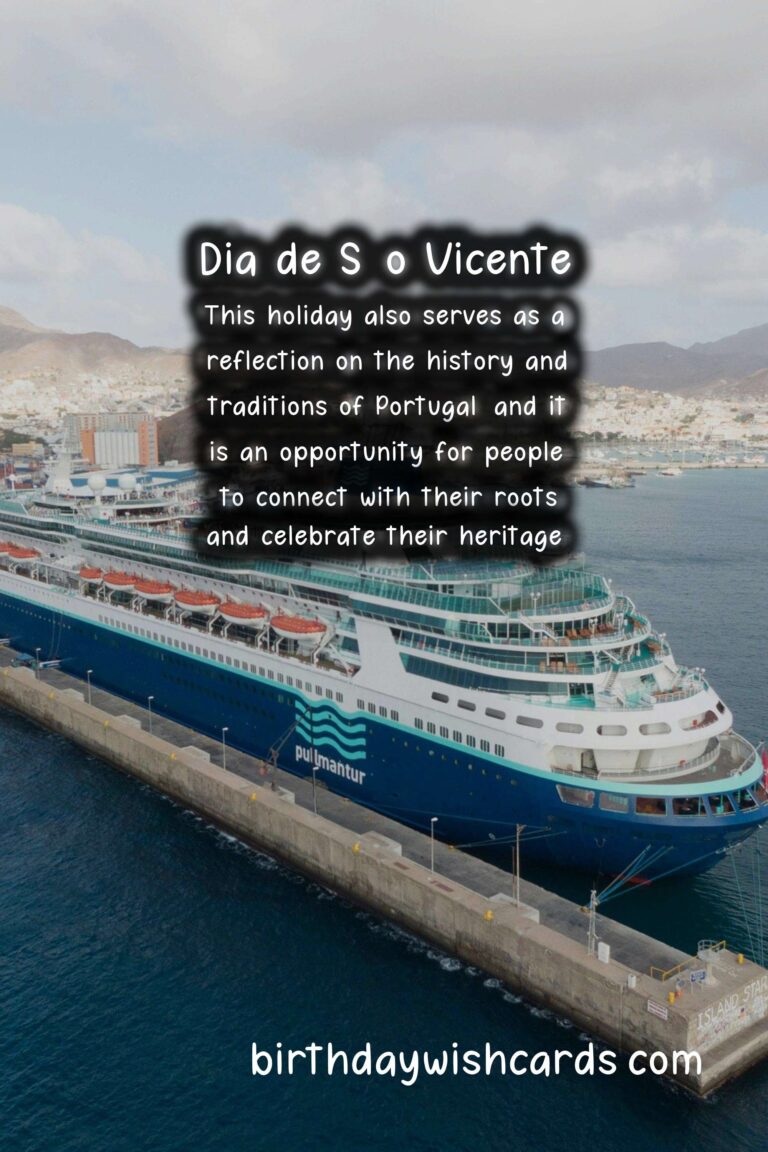Día de la Virgen del Carmen – Celebrating the Feast of Our Lady of Mount Carmel on July 16
The History and Significance of Día de la Virgen del Carmen – Celebrating the Feast of Our Lady of Mount Carmel
Día de la Virgen del Carmen, also known as the Feast of Our Lady of Mount Carmel, is a popular Catholic holiday celebrated on July 16. It is a day to honor and pay homage to the Virgin Mary, the mother of Jesus Christ, under her title of Our Lady of Mount Carmel. This feast day holds great significance for Catholic communities and is celebrated with great joy and devotion all around the world.
The Origin and History of the Feast of Our Lady of Mount Carmel
The celebration of Our Lady of Mount Carmel dates back to the 12th century. The Carmelite Order, a Catholic religious order, was founded on Mount Carmel in the Holy Land. The order was established by a group of hermits who dedicated their lives to prayer and contemplation. They built a small chapel in honor of the Virgin Mary on Mount Carmel, where they believed that the prophet Elijah had seen the cloud that symbolized the coming of the Messiah.
According to Catholic tradition, the Virgin Mary appeared to Saint Simon Stock, the superior general of the Carmelite Order, in 1251. She presented him with a brown scapular, a cloth garment worn over the shoulders, and promised him that whoever wore it with devotion would be protected from eternal damnation. This event is seen as the origin of the Brown Scapular devotion, which is closely associated with the feast day of Our Lady of Mount Carmel.
The Significance of Our Lady of Mount Carmel
The feast of Our Lady of Mount Carmel holds deep significance for Catholics. It is seen as a symbol of Mary’s maternal protection and her special role in salvation history. This day is also a celebration of the love and devotion that Catholics have for the Virgin Mary, who is considered the greatest saint in the Catholic Church after Jesus Christ.
Our Lady of Mount Carmel is also associated with the scapular devotion, which is considered a sign of Mary’s protection and a reminder of the individual’s commitment to follow in the footsteps of Christ. The brown scapular is believed to bring spiritual benefits to those who wear it, such as the grace of final perseverance and the conversion of sinners.
How is Día de la Virgen del Carmen Celebrated?
The feast of Our Lady of Mount Carmel is a day of celebration and devotion for the Catholic community. Many churches hold special masses and processions in honor of the Virgin Mary, with parishioners wearing the brown scapular as a sign of their devotion.
In some countries, such as Spain and Italy, the celebration of Our Lady of Mount Carmel is accompanied by traditional festivities such as parade and fiestas. These celebrations often involve music, dancing, and delicious food as a way to honor the Virgin Mary’s special day.
Sentences Related to Día de la Virgen del Carmen – Feast of Our Lady of Mount Carmel
1. Día de la Virgen del Carmen, or the Feast of Our Lady of Mount Carmel, is a Catholic holiday celebrated on July 16 every year.
2. The origin and history of this feast day dates back to the 12th century when the Carmelite Order was founded on Mount Carmel.
3. The feast of Our Lady of Mount Carmel is a celebration of Mary’s motherly love and protection for all her children.
4. The brown scapular devotion is closely associated with this feast day, as it signifies Mary’s promise to protect those who wear it with devotion.
5. Catholics around the world celebrate this day with great joy and devotion, attending special masses and processions in honor of the Virgin Mary.
6. Many countries also hold traditional festivities to celebrate Día de la Virgen del Carmen, with food, music, and dancing as a part of the celebrations.
7. The feast of Our Lady of Mount Carmel is a reminder of Mary’s important role in salvation history and her constant care and protection for her children.
8. Devotion to Our Lady of Mount Carmel is a way for Catholics to deepen their relationship with the Virgin Mary and follow in the footsteps of Christ.
9. This feast day is also a celebration of the love and admiration that Catholics have for the Blessed Mother, who is considered the greatest saint in the Catholic Church after Jesus Christ.
10. Día de la Virgen del Carmen is a beautiful celebration of faith, devotion, and love for the Virgin Mary, whom Catholics entrust with their prayers and lives.
1. Día de la Virgen del Carmen, or the Feast of Our Lady of Mount Carmel, is a Catholic holiday celebrated on July 16 every year.
2. The origin and history of this feast day dates back to the 12th century when the Carmelite Order was founded on Mount Carmel.
3. The feast of Our Lady of Mount Carmel is a celebration of Mary’s motherly love and protection for all her children.
4. The brown scapular devotion is closely associated with this feast day, as it signifies Mary’s promise to protect those who wear it with devotion.
5. Catholics around the world celebrate this day with great joy and devotion, attending special masses and processions in honor of the Virgin Mary.
6. Many countries also hold traditional festivities to celebrate Día de la Virgen del Carmen, with food, music, and dancing as a part of the celebrations.
7. The feast of Our Lady of Mount Carmel is a reminder of Mary’s important role in salvation history and her constant care and protection for her children.
8. Devotion to Our Lady of Mount Carmel is a way for Catholics to deepen their relationship with the Virgin Mary and follow in the footsteps of Christ.
9. This feast day is also a celebration of the love and admiration that Catholics have for the Blessed Mother, who is considered the greatest saint in the Catholic Church after Jesus Christ.
10. Día de la Virgen del Carmen is a beautiful celebration of faith, devotion, and love for the Virgin Mary, whom Catholics entrust with their prayers and lives.










#DíadelaVirgendelCarmen #FeastofOurLadyofMountCarmel #CatholicCelebration







